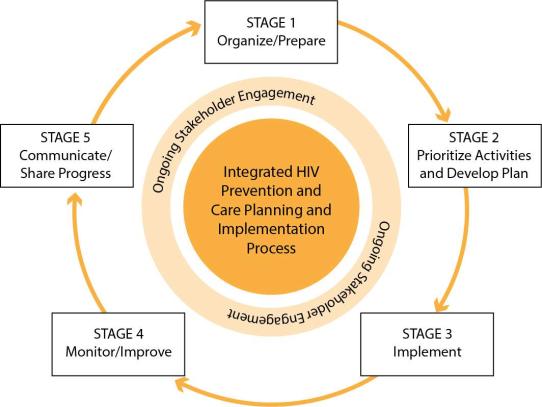
The integrated planning process brings together HIV prevention and care priorities and includes activities required for Integrated Plan development. While the details of each Integrated Plan and planning process may vary across jurisdictions, there are five unique stages that make up the overall integrated planning process.
- Stage 1: Organize and prepare
- Stage 2: Prioritize activities and develop plan
- Stage 3: Implement the plan
- Stage 4: Monitor the plan and make improvements
- Stage 5: Communicate and share progress
Integrated planning is a cyclical and iterative process; lessons learned feed into subsequent stages and inform improvements. This dynamic also means that jurisdictions do not start over in Stage 1, but rather re-organize or update plans based on previous planning activities. Similarly, Stakeholder Engagement is an ongoing activity to ensure that processes and the Integrated HIV Prevention and Care Plan accurately reflect the jurisdictions’ landscape and community needs.